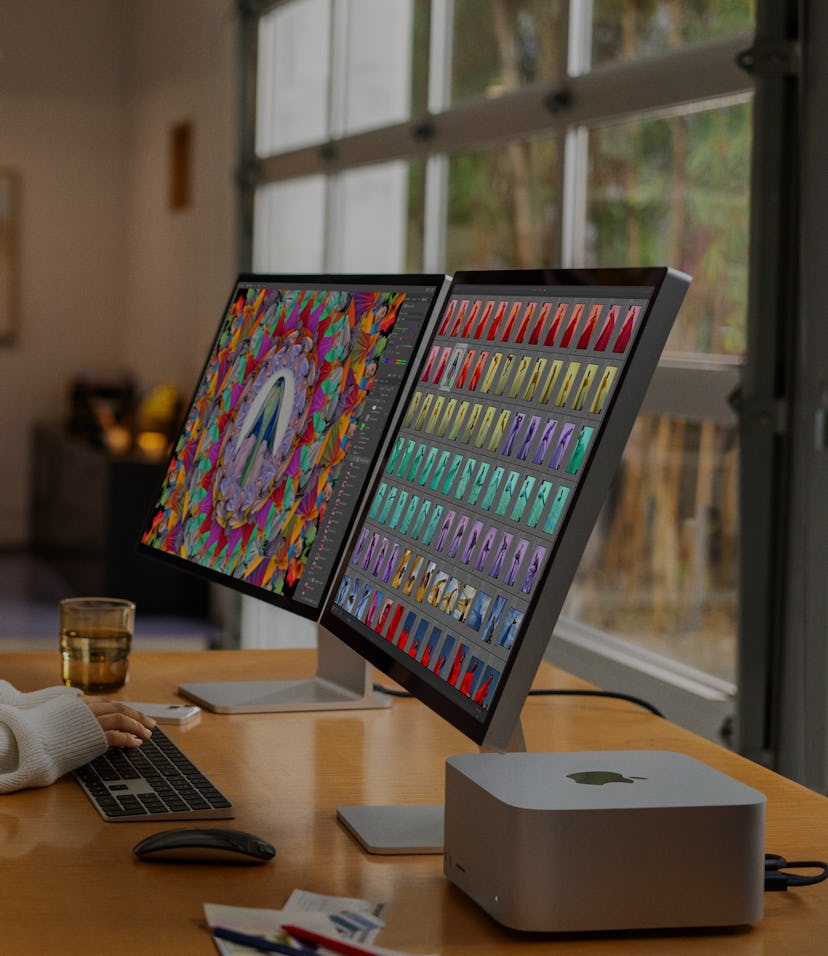Tech
Apple’s Mac Studio and Studio Displays might be hard to find until June
Either demand is higher than expected for Apple's $2,000 (at a minimum) computer or the supply chain is rearing its ugly head again

Apple’s new Mac Studio and Studio Display launch today, and despite disappointing webcam performance, they seem to be just as game-changing as Apple promised — if you can get your hands on one. Both the Mac Studio and Studio Display are currently back-ordered on Apple’s online store, in some cases as far back as June according to 9to5Mac.
Taking stock on Apple’s website, all models of the Mac Studio and Studio Display are delayed to some extent. The $1,999 entry-level model of the Mac Studio with the M1 Max in either the 24 or 32-core GPU varieties with 32GB of RAM won’t arrive until April. Step up to the new M1 Ultra chip and things get even more dire, with an estimated wait of 10 to 12 weeks, meaning you wouldn’t get your new computer till June or the end of May at the earliest.
Current delays — The Studio Display fairs somewhat better. The cheapest version for $1,599 with the normal anti-glare coating and non-height adjustable stand is slated to come in April. Add the nano-texture finish or a different stand, though, and the ship date slips to May.
If you’re willing to head into stores you might get lucky, but in-store stock seems to be limited to the more affordable models, at least looking at stores in Southern California. Your own personal mileage may vary.
Supply chain woes? — There’s a lot of excitement around both of these products, whether it’s because Apple is finally listening to its diehard fans and restoring ports to their rightful place, or for the simple fact that the company is releasing a nice monitor for less than $5,000. But is it enough interest to already warrant these long delays?
I wouldn’t be surprised if in some way Apple and its manufacturing partners are feeling the squeeze of ongoing pandemic supply chain issues. Not a unique problem, but notable because Apple’s current hardware strategy seems to be about avoiding all that by reducing the variety of custom silicon it produces. It’s why the M1 chip is popping up in more and more devices like the iPad Air 5, why the iPhone SE 3 and iPad Mini 6 are using the A15 Bionic, and why Apple might be considering using the A15 Bionic for another year in non-Pro iPhone 14s.
We’ll see how things shake out as Apple’s new hardware gets into customers’ hands, but for now, if you’re looking for a taste of M1 Ultra goodness, be prepared to wait.